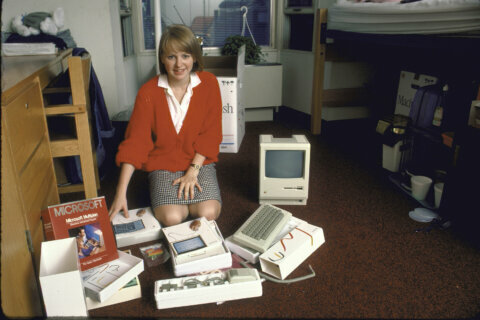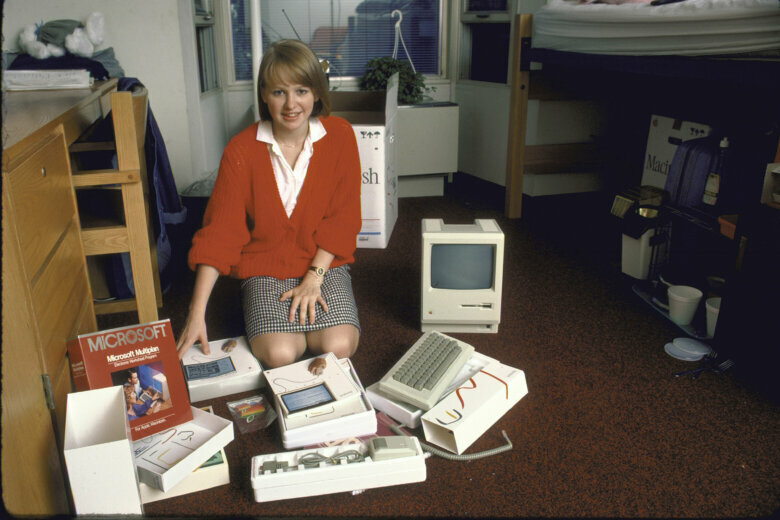
From the floppy disk to the headphone jack, Apple has a history of removing ubiquitous technology from its gadgets before people think they’re ready to give them up.
In some cases, Apple’s changes have been about making devices faster, more functional, thinner, or less tied down by a tangle of wires. In other instances, Apple pushed industry standards for technology in a new direction.
Now, Apple could be ready to take the next big leap with a wireless iPhone.
Here are a few major examples of Apple ditching tech.
A wireless iPhone?
Top Apple analyst Ming-Chi Kuo, of TF International Securities, released a report earlier this month predicting that Apple will remove the lightning cable port from high-end iPhone models in 2021. That would create a wireless version of the iPhone that Kuo said would help to differentiate the more expensive iPhone models and boost sales.
Kuo’s forecast isn’t a certainty and Apple declined to comment on it. But if the predictions are borne out, it could be a sign that Apple will move toward killing the lightning charger altogether.
Apple already sells wireless charging docks that work with the iPhone 8 and later. But it’s not clear consumers are clamoring for a fully wireless iPhone just yet.
For one thing, wireless charging is just not as fast as traditional, wired charging yet. The 18-Watt wired charger was a major selling point for the iPhone 11 because of its rapid charging speed, according to Wedbush Securities analyst Dan Ives. By contrast, the fastest wireless chargers offer only 7.5 watts.
There would be other challenges, too. Customers would have to toss their wired headphones and chargers and buy new ones. And many older cars enabled with CarPlay — Apple’s technology that lets users see Apple Maps, Music and other apps on their car screens — require a plug for the feature to work.
Death of the disk drive
With the 1998 release of the iMac, Apple did away with the floppy disk drive, leaving only a rewritable CD drive.
That lasted about 10 years, and then Apple killed the CD drive, as well.
The MagSafe charger
This popular charging technology disappeared from Apple laptops with the 2015 MacBook Air and 2016 MacBook Pro. It was a controversial decision — the magnetic charging cable was popular because if it was unexpectedly yanked on (say, by tripping over the cord), the charger would easily disconnect rather than pulling the laptop down to the ground.
Those Macs also did away with the traditional USB port. The USB port and MagSafe charger were replaced with a USB-C port that doubles as a charger and a way to quickly transfer data to and from the computer.
The switch allowed Apple to make a thinner, lighter computer but it meant that users who still used the larger USB drives had to buy adapters to connect them to their new computers.
The 30-pin charging cable
In 2012, Apple switched to the lightning cable, and Apple customers said goodbye to the larger 30-pin charging port, which had been used in iPhones, iPads and iPods for a decade.
But the company has slowly been phasing the lightning cable out of its iPad designs. And the lightning cable doesn’t plug into most Apple computers these days.
Goodbye, headphone jack (hello, AirPods)
The iPhone 7 and iPhone 7 Plus, released in 2016, got rid of the headphone jack, instead featuring just one USB-C port that could be used for headphones and charging (and requiring customers to buy new headphones or an adapter in order to use them with the new phone).
Separately, this new model also got rid of the physical home button on the front of the phone, opting instead for a virtual button with haptic feedback, which simulates the feel of pushing the home button. The home button went away entirely with the debut of the iPhone X in 2017. This year, Apple made no new iPhones with home buttons.
Touch ID vs. Face ID
Many users were skeptical when Apple introduced Touch ID, its fingerprint sensor unlocking technology, for iPhones in 2013. But privacy and security fears surrounding the use of biometric data didn’t stop Apple from removing Touch ID and replacing it with Face ID, facial recognition unlocking technology, with the iPhone X in 2017 (users opt-in to use the tech).
When it announced the iPhone X, the company said the new unlocking technology was significantly more secure than Touch ID — the odds of someone wrongly gaining access to a phone with Face ID is one in 1 million, Apple said, versus the one in 50,000 change with Touch ID.
The “butterfly” keyboard saga
But such changes have not always stuck.
The 2015 MacBook Air also came with a new kind of keyboard, called the “butterfly,” replacing the old “scissor” style keyboard. The update was another way of making its laptops thinner, and the keys require less forceful tapping in order to work.
But the butterfly keyboard has not been well received by customers, even after two redesigns. Many complained about the keys sticking or malfunctioning, and Apple publicly apologized earlier this year.
In November, Apple released a new MacBook Pro that reverted back to the old (though slightly updated) scissor keyboard. And Kuo predicted in a note earlier this year that Apple’s other computers will soon get the scissor keyboard back, too.
Speaking of keyboards…
This getting rid of standard technology thing dates all the way back to Apple’s very first Macintosh computer in 1985.
Unlike the early Apple 1 and Apple 2 computers — and other companies’ models at the time — the Macintosh came without arrow keys on the keyboard to train early personal computer customers how to use a mouse. It turned out, though, that people wanted both a mouse and arrow keys, so Apple reinstated the arrow keys, which have remained ever since.








